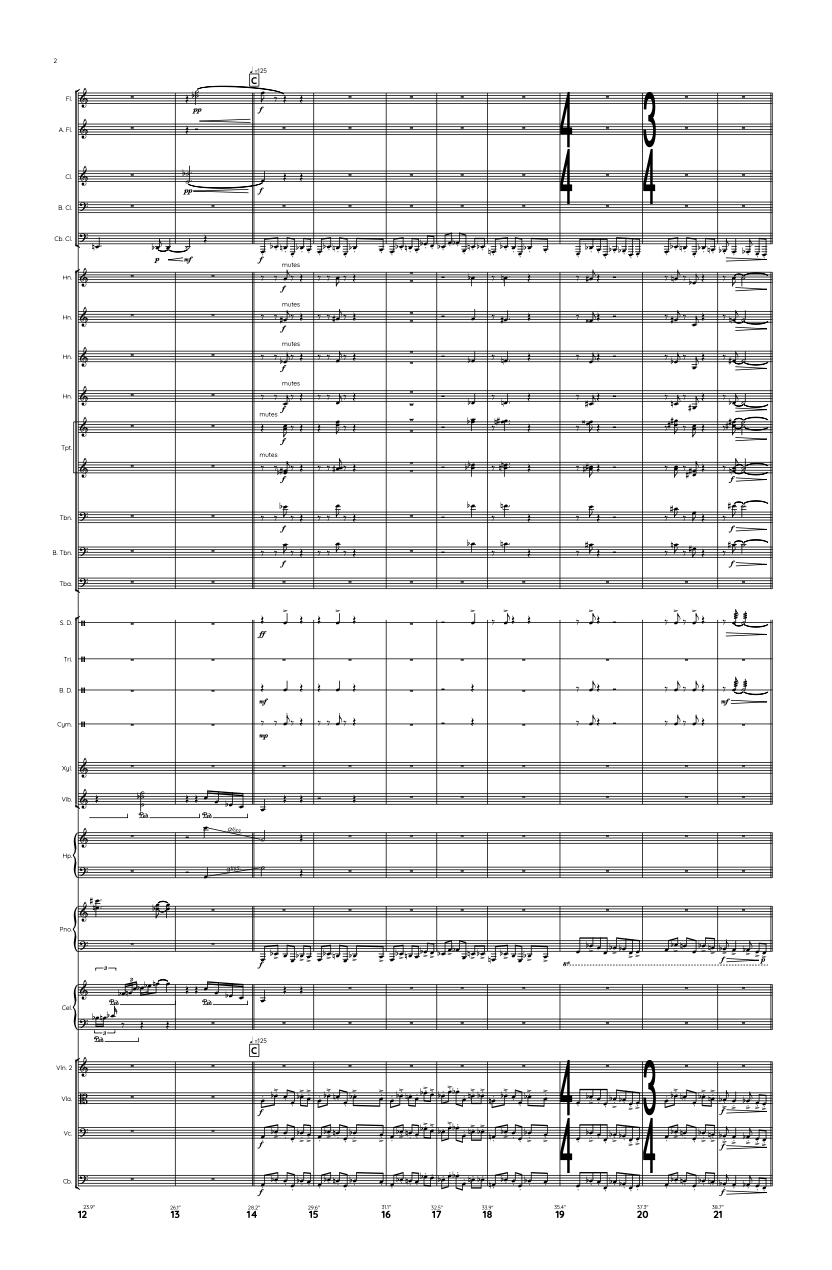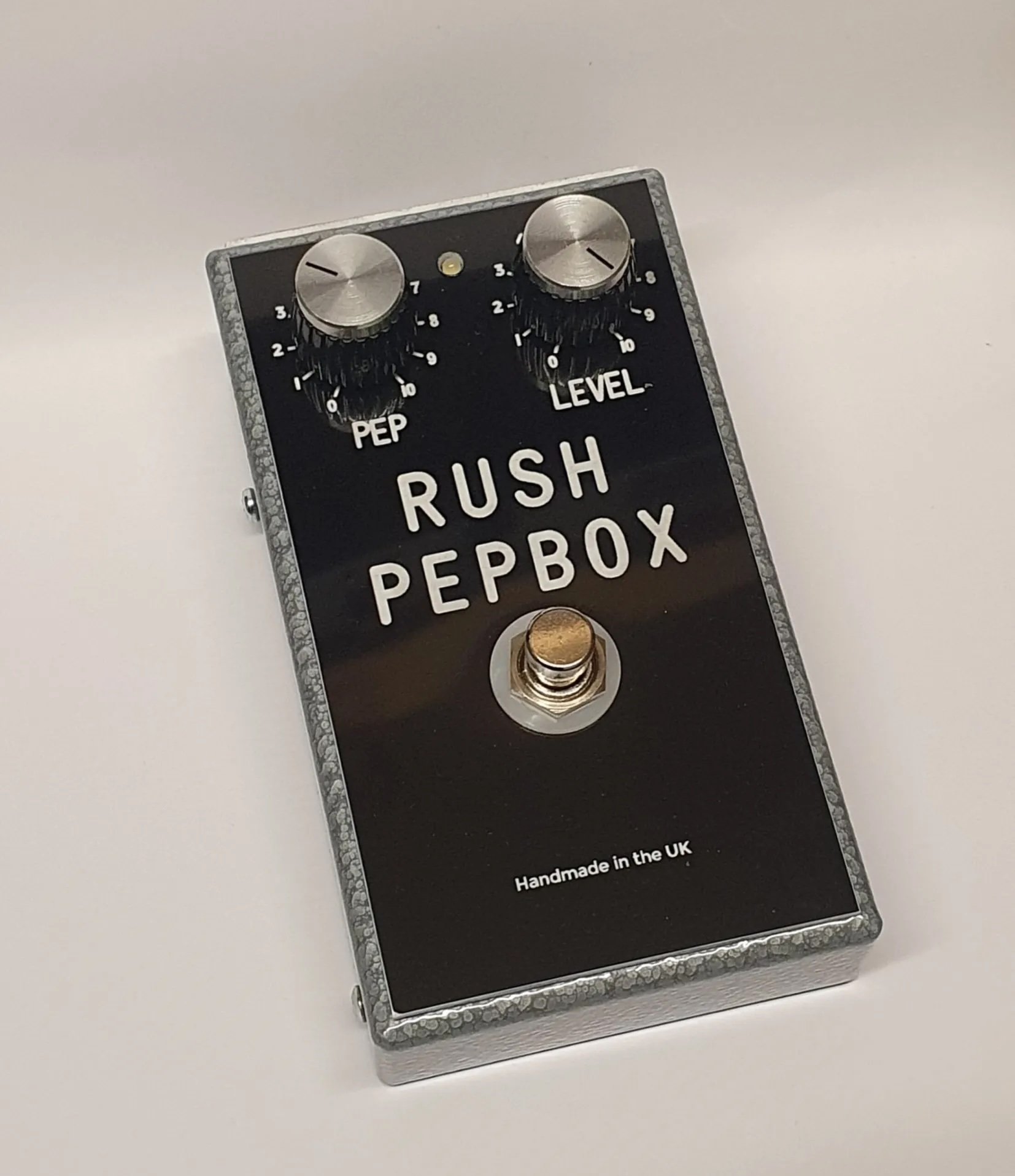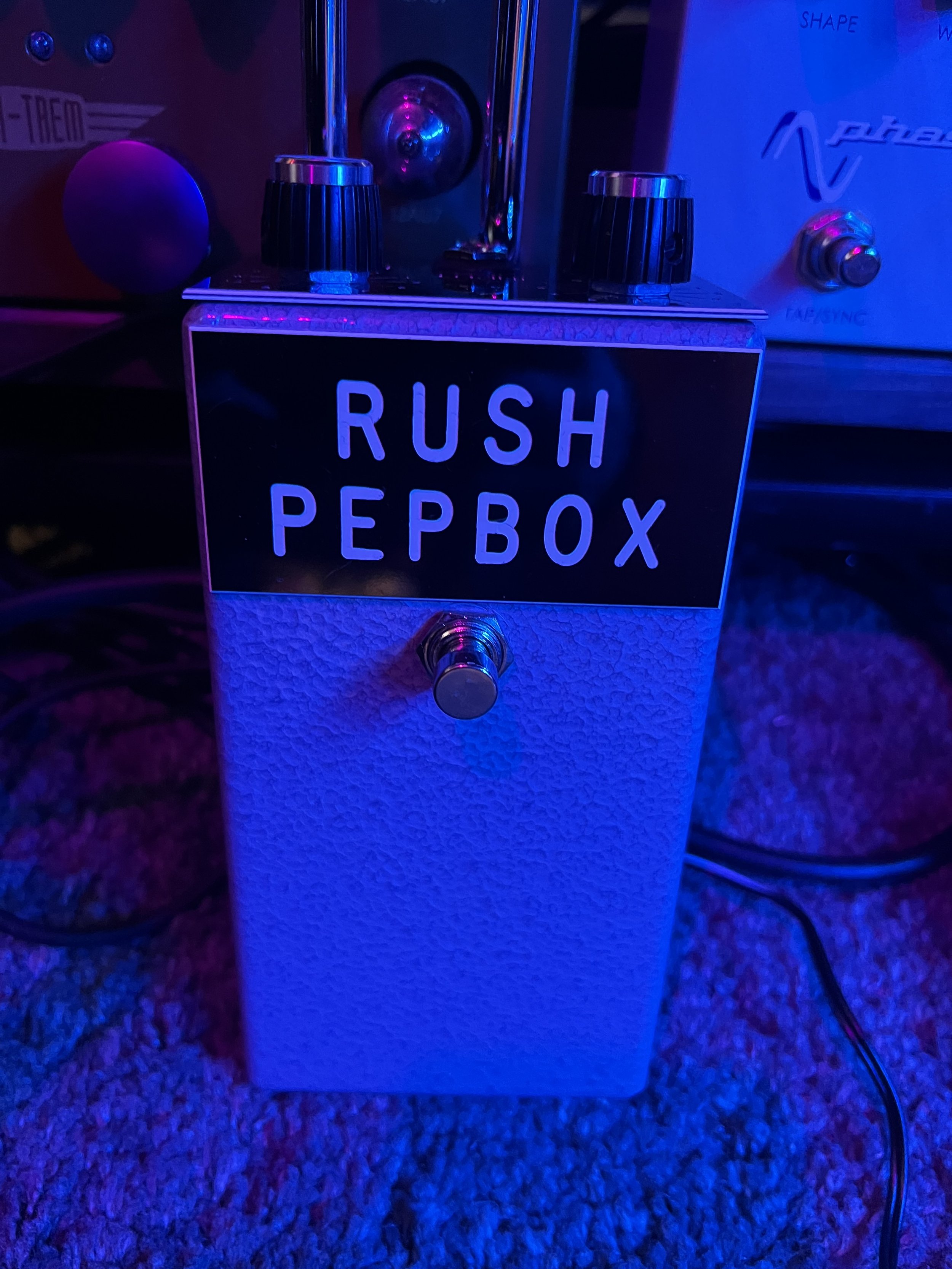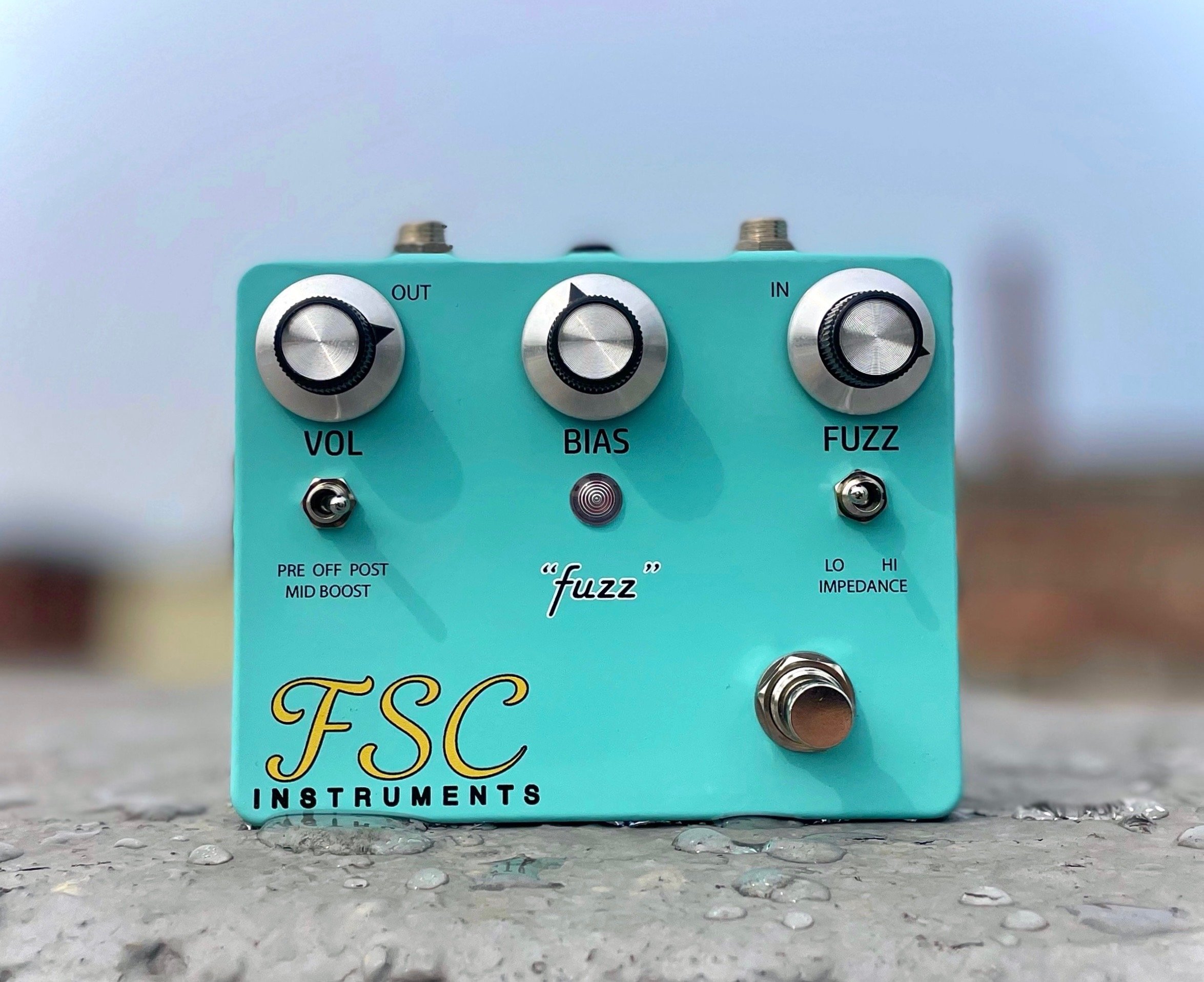The Rush Pepbox: Unveiling the Holy Grail of Early Fuzz Tones
I've dedicated considerable time delving into the intricacies of classic fuzz tones. To my discerning ears, one fuzz pedal doesn't cover all the sonic ground I seek. I'm meticulous about embracing the diverse characteristics inherent in each era and circuit of fuzz, strategically pairing them with the specific session or gig at hand.
What has captivated my attention is the void in the reproduction of early-era fuzz pedal circuits. In particular, the resonant allure of the original Maestro FZ-1 has enchanted me. My 90s Gibson reissue, crafted during a limited run, has become a rarity to procure.
Unbeknownst to me, amidst this quest, another early fuzz circuit has quietly continued production—the Rush Pepbox, conceived by the circuit designer Pepe Rush and now made by his daughter, Lucy Rush.
A familial collaboration, Lucy worked alongside her father until his passing, making the Pepbox a testament to generational craftsmanship. In an industry where legacy businesses are a scarcity, this connection to the roots is noteworthy.
It's a unique opportunity to grasp a current production so closely tied to its origins. The Pepbox, as conceived by Pepe Rush in London in 1966, emerged when a guitarist approached him with a desire for a fuzz pedal akin to the Maestro. Presumably inspired by the Maestro, the Pepbox was born.
Initially, Pepe Rush partnered with WEM Electronics for the distribution of early Pepboxes. However, the narrative took a turn when WEM ceased paying royalties to Pepe and altered components without his approval, thus altering the tone.
For vintage Pepbox enthusiasts, awareness of the era is crucial, as not all units meet the same standard. In contrast, the current Pepbox by Lucy Rush stands as an authentic representation, free from compromise by WEM, offering a genuine connection to its original design.
From initially struggling to find a fuzz circuit authentically capturing the essence of early 60s fuzz, I transitioned to discovering a true holy grail in the form of the Pepbox.
Rush Amps operates as a small enterprise, with Lucy meticulously handcrafting each pedal and overseeing all aspects of business, from correspondence to packing. This leaves little room for extensive social media promotion, rendering the Pepbox a well-kept secret in certain circles.
Identity
The Pepbox, epitomizing the essence of early fuzz tones, belongs to the lineage of the Maestro FZ-1 but carries its distinctive imprint courtesy of Pepe Rush.
Distinguishing itself, the Pepbox boasts more gain compared to the Maestro yet maintains the versatility to be tamed for a cleaner sound. I particularly relish dialing back my guitar's volume knob, creating a compressed midrange tone that exudes a unique vibe.
Characterized by a focused midrange frequency range, the Pepbox excels in a mix, eliminating the need to filter out lower frequencies as required with some other fuzz pedals.
Orchestration from “Brick and Stone” by Mark Marshall
Drawing an analogy to a bassoon or oboe, the Pepbox's attack, release, and tonality contribute to its unique sonic signature. Its swift attack sets it apart from slower alternatives, and the quick release stands in contrast to the more lingering release of certain fuzz pedals.
I find it valuable to categorize fuzz pedals based on their characteristics, and the Pepbox, distinct from softer fuzz options like the Fuzz Face circuit, aligns itself more with the attack, release, and tone family of string instruments.
In my sonic palette, Tonebenders, exemplified by the Seeker MKI, tend to occupy a brass family. As an orchestrator, these distinctions guide my choices.
Having dedicated time to experimenting with various amp pairings, ranging from clean to overdriven, the Pepbox consistently proves its adaptability, performing admirably in each scenario.
Pairings
I'm an advocate for running fuzz pedals into amps that are on the verge of breaking up. While not an absolute rule, it's worth experimenting with overdriven amps before deciding on the fuzz's compatibility, and vice versa.
Pairing fuzz pedals with overdrive pedals is another avenue I explore. Placing the overdrive after the fuzz allows me to shape the buzzy tone and gently trim off the transients. Two of my preferred overdrive pedals for this purpose are the Effectrode Tube Drive and The Earthdrive, both adorned in green—a color choice that, scientifically or not, seems to enhance their sonic appeal.
The marriage of fuzz and wah-wah is akin to classic combinations like peanut butter and jelly (or for those with nut allergies, sun butter and jelly). Yet, pairing a wah with fuzz pedals can pose sonic and signal challenges. Enter the Teese Picture Wah, chosen not just for its tonality but also for its fuzz-friendly circuit, accommodating placement in front of old-school Germanium fuzz pedals.
In my sonic symphony, I revel in the combination of the Picture Wah, Pep Box, and a guitar volume knob rolled back about a quarter of the way.
Delving into the unique qualities of the Pepbox, it introduces a gated quality, though not as pronounced as with a Tonebender MKI. Similarly, the ring modulation tendencies are present but in a more subtle manner. The gating effect in the Pepbox is more about the release of sound rather than an abrupt cutoff, offering a controlled contrast to the unpredictable nature of a Tonebender.
Retro-Modern
Despite delving into the past, the Pepbox is not confined to retro vibes. I find its integration with modern effects in recordings produces intriguing results. While it effortlessly delivers authentic 60s fuzz tones, it also serves as a versatile tool in unconventional settings, adding a different dimension to heavy music compositions.
In my quest for authentic replication, I prefer pedals as close to the original as possible, often eschewing power for cheap batteries. However, recognizing the evolving preferences of contemporary players, Lucy has designed the Pepbox 2.0—compact, with top-mounted controls, and compatible with standard power supplies, catering to diverse player needs.
I don't write about just any pedal; I seek out specific tones from companies doing exceptional work. Having played through numerous pedals, I've encountered the truly special ones, a subjective judgment. For those on a sonic adventure seeking guitar tone jewels, the Pepbox is a must-have.
Please make sure you get a genuine Pepbox only from Rush Amps, as fraudulent imitations use the Pepbox logo and casing. Lucy is the sole authentic producer of the Pepbox.
Proof is in the Pudding
All recordings (except for Ampeg and Marshall amp sounds) were captured using a TUL G12 microphone designed specifically for guitar amp recording. The signal flowed through an API 312 mic pre, Purple Audio MC77, UAD Apollo, and into Pro Tools. Switching between amps was facilitated by the Ampete 88S amp switcher. The Marshall SV20H and Ampeg V48 were run through the UA OX, following the same recording chain. All electric guitars feature DR Pure Blues Nickel Strings, except the P Bass, which boasts flat wounds.
Listen to my podcast episode about the Rush Pepbox:

















